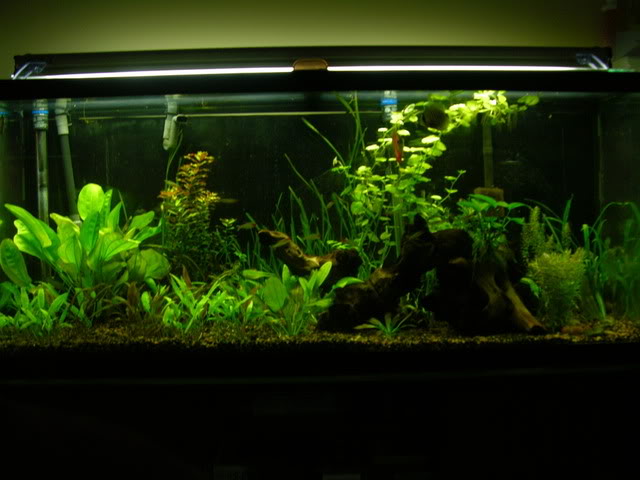Hey everyone, I have recently decided to invest in a large aquarium and I have been doing lots of research so I could eliminate most of the beginner mistakes. So here is what I am planning on working with:
*$500 budget (+/-)
*46-75 gal. (w/ stand)
*live plants
*tropical fish
*other attractive decor
*timed power strip
*filter, bulbs, thermometer, heater
I know these aren't very specific, but I am trying to get a general idea of what kind of setup I want before I do further research. I also have several questions or what is recommended/needed:
*Floor: gravel, rocks/stones, sand, live sand
*Filter: mechanical, chemical, biological
*Accessories: UV filter, lunar bulbs (I love night-views of fish)
*Chemical Testers: will less expensive ones work as well as top dollar?
*Algae Control: algae eaters (shrimp, snails, fish)
*Chemicals: hardeners, softeners, phos-x, others I'm not aware of
*Siphon Pumps: do manual ones work well?
I know that there is probably loads of information about all of these, but if anyone can contribute their knowledge on at least one of the topics, I would greatly appreciate it. Also, if you have any links to sites that most likely have answered these questions before, that would be great. Thanks again you guys!
*$500 budget (+/-)
*46-75 gal. (w/ stand)
*live plants
*tropical fish
*other attractive decor
*timed power strip
*filter, bulbs, thermometer, heater
I know these aren't very specific, but I am trying to get a general idea of what kind of setup I want before I do further research. I also have several questions or what is recommended/needed:
*Floor: gravel, rocks/stones, sand, live sand
*Filter: mechanical, chemical, biological
*Accessories: UV filter, lunar bulbs (I love night-views of fish)
*Chemical Testers: will less expensive ones work as well as top dollar?
*Algae Control: algae eaters (shrimp, snails, fish)
*Chemicals: hardeners, softeners, phos-x, others I'm not aware of
*Siphon Pumps: do manual ones work well?
I know that there is probably loads of information about all of these, but if anyone can contribute their knowledge on at least one of the topics, I would greatly appreciate it. Also, if you have any links to sites that most likely have answered these questions before, that would be great. Thanks again you guys!


